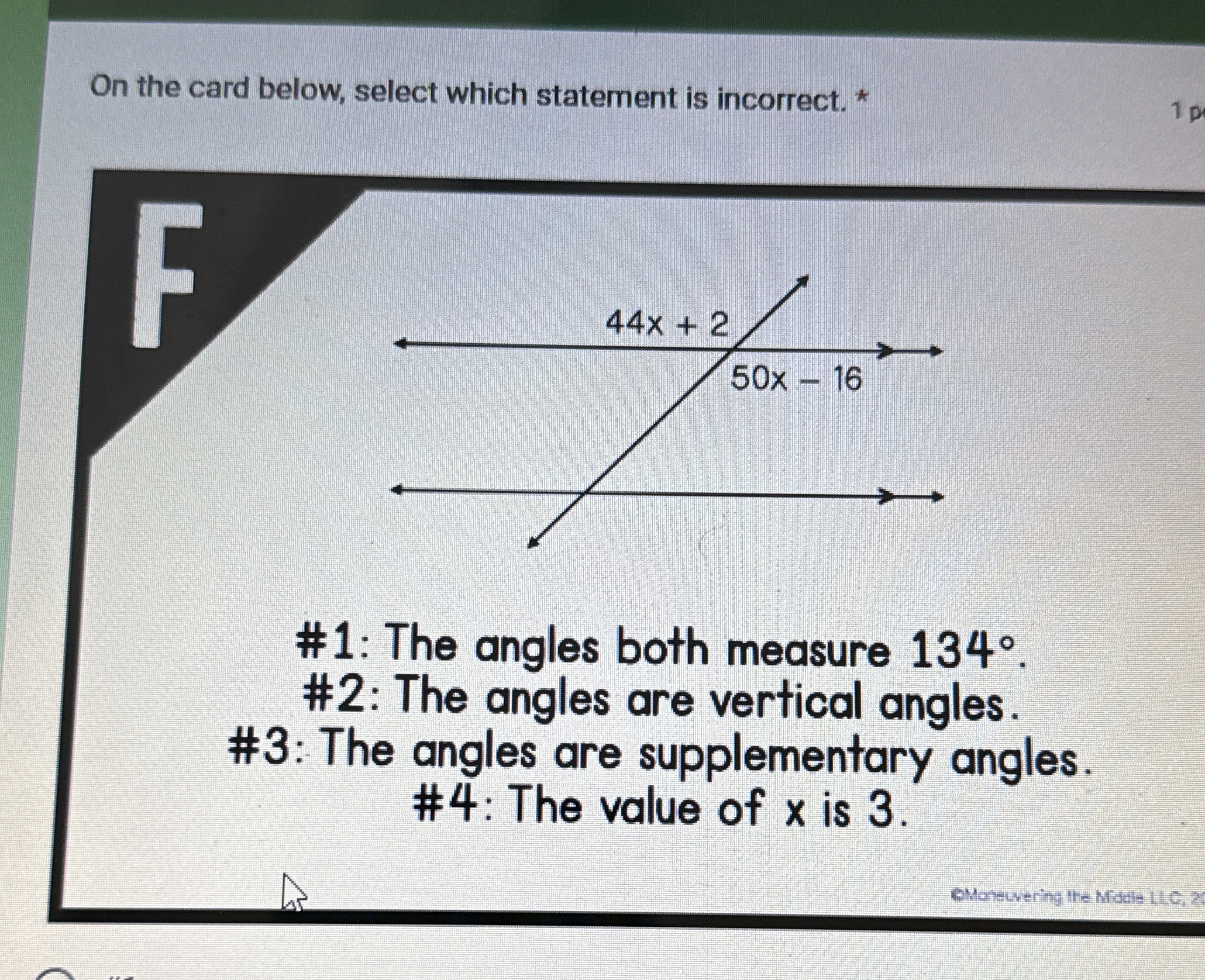On the card below, select which statement is incorrect: #1: The angles both measure 134°. #2: The angles are vertical angles. #3: The angles are supplementary angles. #4: The value... On the card below, select which statement is incorrect: #1: The angles both measure 134°. #2: The angles are vertical angles. #3: The angles are supplementary angles. #4: The value of x is 3.

Understand the Problem
The question is asking to identify which of the four statements about the angles formed by the intersecting lines is incorrect based on the given expressions for the angles in terms of x.
Answer
The incorrect statement is #4: The value of $x$ is 3.
Answer for screen readers
The incorrect statement is #4: The value of x is 3.
Steps to Solve
-
Set up the equation for the angles The angles formed by the intersecting lines are given in terms of $x$: one angle is represented as $44x + 2$ and the other as $50x - 16$.
-
Determine the relationship of the angles Since the lines intersect, we know that the angles can either be supplementary (add up to $180^\circ$) if they are adjacent, or they can be equal if they are vertical angles.
-
Set up the equation for supplementary angles Assuming these angles are supplementary: $$ (44x + 2) + (50x - 16) = 180 $$
-
Combine like terms Combine the $x$ terms and the constants: $$ 94x - 14 = 180 $$
-
Solve for $x$ Add 14 to both sides: $$ 94x = 194 $$
Now divide by 94: $$ x = \frac{194}{94} = 2.065 $$
-
Evaluate the value of x Since $x \approx 2.065$, which is not equal to 3 (as stated in statement #4), that statement is incorrect.
-
Check the angles for correctness Substituting $x = 2.065$ back into the angle expressions:
- For angle 1: $$ 44(2.065) + 2 \approx 92.86^\circ $$
- For angle 2: $$ 50(2.065) - 16 \approx 92.86^\circ $$ Both angles are approximately $92.86^\circ$, confirming that they are vertical angles, consistent with statement #2.
The incorrect statement is #4: The value of x is 3.
More Information
When two lines intersect, they create pairs of angles that can be either vertical or supplementary. Vertical angles are always equal, while supplementary angles sum to $180^\circ$.
Tips
Common mistakes include:
- Confusing vertical angles with supplementary angles. Remember, vertical angles are equal.
- Not correctly simplifying the equation for x, which can lead to the wrong conclusions.
AI-generated content may contain errors. Please verify critical information